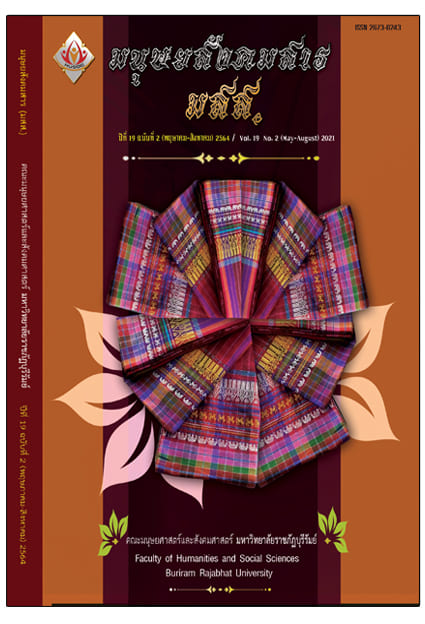Distribution Measurement of Cycling Visitors at Nakhon Ratchasima Zoo Using GPS Tracking System
Main Article Content
บทคัดย่อ
The aim of this study was to investigate visitor distribution by GPS tracking system at Nakhon Ratchasima Zoo. The samples were 122 participants who received GPS tracking and cycled to visit animals around the zoo. The data were categorized into two groups including demographic and travelling profile and top animal exhibit. The result revealed that the most visitors were family, while the member of half visitors were 3-5 people. Most visitors spent their time with cycling less than 2 hours and lower than 6 kilometers. Visitors scatteringly visited animal exhibits, and they often passed only half of the exhibits. Amongst total exhibits, the 51-75 % of them were popularly visited. The top 3 popular exhibits were giraffe, chimpanzee and tapir, whereas the most exhibit zone that the visitors spent total time were zoo kid zone, reptile, seal show building and chimpanzee zones. The chimpanzee zone was only one exhibit that was full of visitors and got the highest satisfaction score from the visitors, while the zoo kid and the reptile zones were lower score. Overall, visitor behaviors, exhibit appearances and animal types are crucial factors that influence the zoo visitors.
Article Details

อนุญาตภายใต้เงื่อนไข Creative Commons Attribution-NonCommercial 4.0 International License.
เนื้อหาและข้อมูลในบทความที่ลงตีพิมพ์ในวารสารทดสอบระบบ ThaiJo2 ถือเป็นข้อคิดเห็นและความรับผิดชอบของผู้เขียนบทความโดยตรงซึ่งกองบรรณาธิการวารสาร ไม่จำเป็นต้องเห็นด้วย หรือร่วมรับผิดชอบใดๆ
บทความ ข้อมูล เนื้อหา รูปภาพ ฯลฯ ที่ได้รับการตีพิมพ์ในวารสารทดสอบระบบ ThaiJo2 ถือเป็นลิขสิทธิ์ของวารสารทดสอบระบบ ThaiJo2 หากบุคคลหรือหน่วยงานใดต้องการนำทั้งหมดหรือส่วนหนึ่งส่วนใดไปเผยแพร่ต่อหรือเพื่อกระทำการใดๆ จะต้องได้รับอนุญาตเป็นลายลักอักษรจากวารสารทดสอบระบบ ThaiJo2 ก่อนเท่านั้น
เอกสารอ้างอิง
D'Antonio, A., Monz, C., Lawson, S., Newman, P., Pettebone, D. & Courtemanch, A. (2010). GPS-based measurements of backcountry visitors in parks and protected areas: Examples of methods and applications from three case studies. Journal of Park and Recreation Administration, 28(3), 42-60.
East, D., Osborne, P., Kemp, S. & Woodfine, T. (2017). Combining GPS & survey data improves understanding of visitor behavior. Tourism Management, 61, 307-320.
Keereephet, S., Thumathiwat, D. P. & Mankeb, P. (2018). Thai tourists’ satisfaction towards ecotourism management of Kiriwong community, Lan Ska district, Nakhon Si Thammarat province. King Mongkut’s Agricultural Journal, 36(1), 87-98. [in Thai]
Knezevic, M., Zucko, I. & Ljustina, M. (2016). Who is visiting the zagreb zoo: Visitors’ characteristics and motivation. Sociologija i prostor, 54(2), 169-184.
Lee, S.H. (2015). Measurement of visitors' satisfaction with public zoos in Korea using importance-performance analysis. Tourism Management, 47, 251-260.
Li, X. (2020). Space-time distribution model of visitor flow in tourism culture construction via back propagation neural network model. Personal and Ubiquitous Computing, 24, 223-235.
Luebke, J. F. & Matiasek, J. (2013). An exploratory study of zoo visitors' exhibit experiences and reactions. Zoo Biology, 32(4), 407-416.
Munoz, L., Hausner, V. H. & Monz, C. A. (2019). Advantages and limitations of using mobile apps for protected area monitoring and management. Society & Natural Resources, 32(4), 473-488.
Museum Thailand. (2020). Nakhon Ratchasima zoo. Retrieved on 20 November 2020 from https://www.museumthailand.com/en/museum/Nakhon-Ratchasima-Zoo
Sugimoto, K., Ota, K. & Suzuki, S. (2019). Visitor mobility and spatial structure in a local urban tourism destination: GPS tracking and network analysis. Sustainability, MDPI, Open Access Journal, 11(3), 1-17.
The Zoological Park Organization of Thailand. (2015). Visitors report in 2014-2015. Retrieved on 20 November 2020 from http://www.zoothailand.org/ewt_news.php?c_id=77&n_id=266 [in Thai]
Whitworth, A.W. (2012). An investigation into the determining factors of zoo visitor attendances in UK zoos. PLoS ONE, 7(1), 1-10.
Wolf, I. D., Stricker, H. K. & Hagenloh, G. (2013). Interpretive media that attract park visitors and enhance their experiences: A comparison of modern and traditional tools using GPS tracking and GIS technology. Tourism Management Perspectives, 7, 59-72.
Yamane, T. (1967). Statistics, an introductory analysis, (2nd ed.). New York: Harper and Row.


